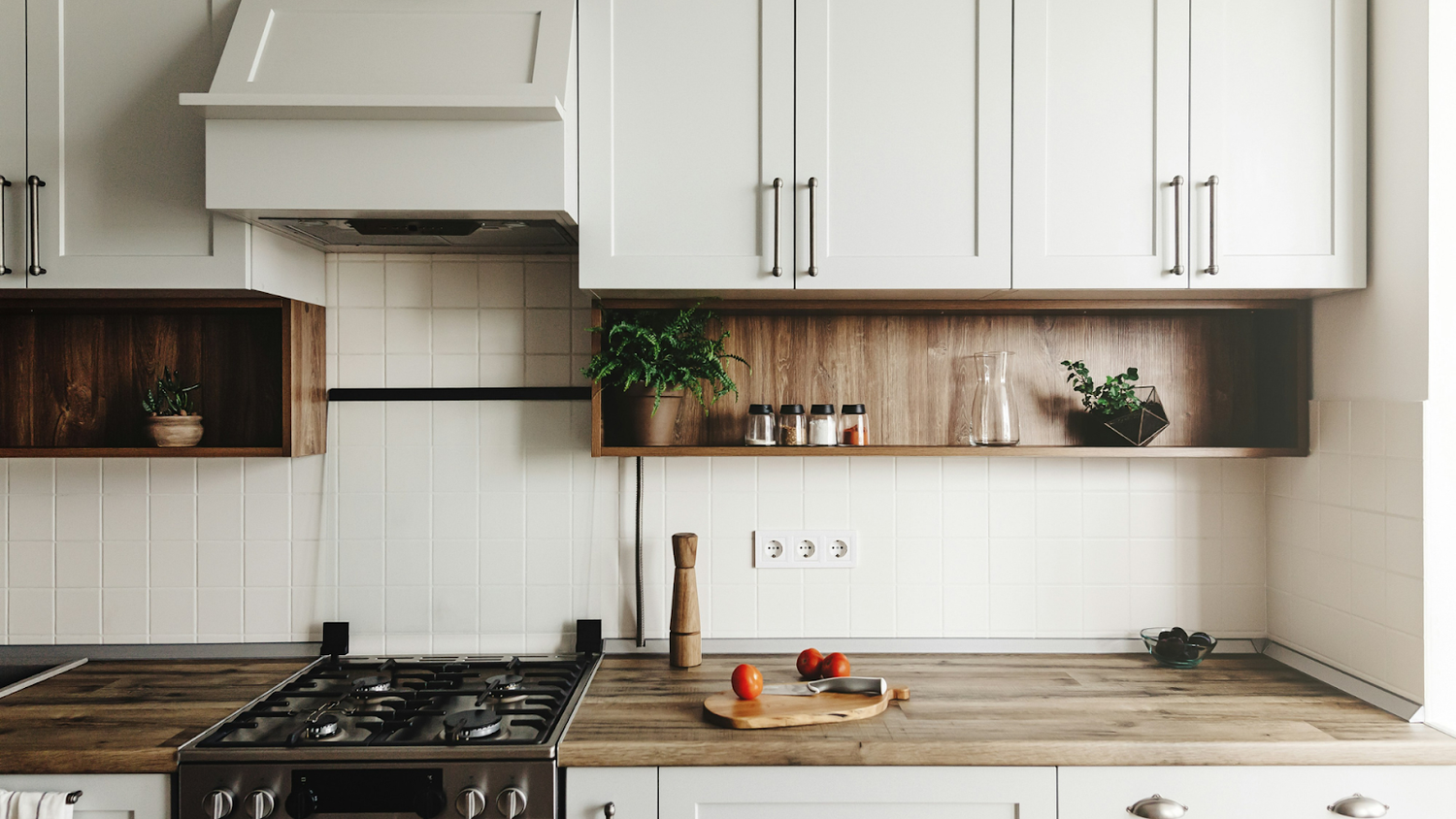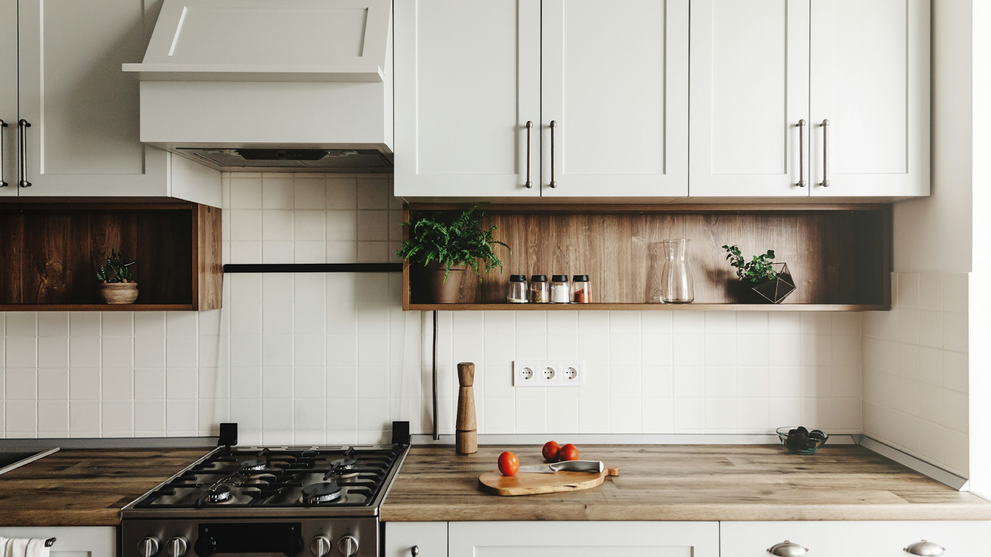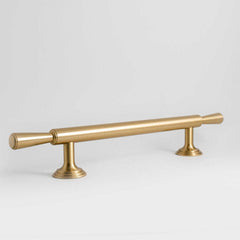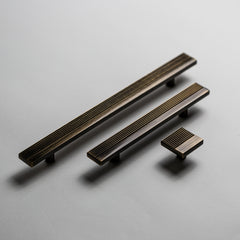Key Takeaways:
- Gather Your Instruments For A Flawless Fit: An accurate measurement is foundational to a successful design. Use essential tools like a tape measure, level, and pencil to translate your vision into a reality.
- How To Map Out Floor Space And Measure Properly: To find the right how to measure dimensions of a dresser and create a balanced room layout, consider who will use the piece. Account for pathways and clearance to harmonize practicality with the poetry of space.
- How To Clear A Path For Your Perfect Piece: A successful delivery depends on careful planning. Measure every doorway, hallway, and stairwell on the route to guarantee a seamless journey from the curb to the final resting place.
There’s a quiet, exhilarating power in capturing the exact dimensions of a dresser. That moment when your hands hover, a tape measure snaps open, and each inch and angle becomes a silent note in the song of your dream room taking shape. At Inspire Hardware, our passion for design glimmers in every detail, from the weight of a perfectly cast knob to the luster of a chosen finish.
The difference between a room that feels balanced and one that misses its mark by just a few inches comes down to accurate measurements. Let’s guide you through the essentials by blending technical know-how with that irresistible spark of inspiration that guides every choice.
Gathering Your Instruments for a Flawless Fit
Great design is built on precision, and so are dressers that truly fit and flatter their space. Before you sketch plans or browse for hardware that has soul, assemble your essential measuring toolkit.
- Measuring Tape: The workhorse of your toolkit, a sturdy retractable tape offers a reliable way to get an accurate how to properly measure a dresser. It captures the width, depth, and height of your space and is flexible enough to snake into the tightest alcove or corner.
- Level: A good level simply checks for straight lines and ensures your dresser's top sits perfectly square, providing clarity whether your space has clean architectural bones or the beautiful irregularities of an old home.
- Pencil and Notebook: This tactile duo is a joy in a digital world. You can sketch rough outlines, jot down dimensions, and capture moments when a dresser-to-wall gap reveals its true proportions.
- Masking Tape: Create a living blueprint by marking your dresser's boundaries directly onto the floor. This trick speaks volumes, visually testing the fit and flow of a room without ever moving a piece of furniture.
- Painter’s Ruler or Yardstick: For checking drawer depth or verifying space for new hardware, these rigid rulers give you clean, reliable edge-to-edge measurements. This tool is especially helpful for understanding the specific how to measure dimensions of a dresser, so your new pieces fit just right.
- Smartphone or Tablet: Tablets and phones make for great versatile pocket references. You can snap a quick photo with measurements noted alongside for that elegance-in-details approach. This also allows for easy reference when you’re shopping for new dresser knobs or exploring options for cabinet door knobs that will finish the look.
Start With the Room: Mapping Out Floor Space
Before you even reach for a measuring tape, pause. Allow yourself a moment to truly see the room as it could be. This practice is your chance to balance movement, mood, and memory within the four walls of your choosing. This quiet reflection ensures every piece you select, down to the final dresser knobs, serves a purposeful role in the space.
Visualize the Narrative
To begin, mentally trace your footsteps through the space. Ask yourself which paths you will walk every day. Does a breezy bedroom with sunlight spilling across oak floors inspire you, or does a moody entryway delivering both drama and function better suit your home? The questions you ask are your blueprint. By asking these questions, you will craft a vision that goes beyond a simple floor plan.
Creating a Living Blueprint
Next, clear the area where your future dresser will live. Let the space breathe, even for a moment. Using painter’s tape to outline the dresser’s footprint, or sheets of craft paper to represent its silhouette, is a valuable exercise. For instance, take a moment to step back and experience the flow. Do doors swing open freely, and can drawers glide outward without colliding with a nearby reading chair?
Consider the choreography of daily life. The simple act of opening and closing those drawers, or passing by with a laundry basket, is a creative endeavor, not a technical one. To perfectly place your chosen furniture, take a look at our cabinet hardware placement guide for insights on visual harmony and balance.
Prioritizing Flow and Function
Finally, measure the dimensions of your marked area, including width, depth, and height. Don’t settle for minimums. Instead, give yourself at least thirty-six inches of clearance for walkways. This generous margin accommodates easy movement and visual openness. Ultimately, when you map out floor space with this quiet attention to detail, you are making room for comfort, clarity, and a feeling of arrival every time you walk in.
The Art of the Right Fit: Measuring for Height, Width, and Depth
Measuring a dresser is an act of precision and creativity. The quiet calculation behind how a room breathes and moves makes all the difference. The contrast between comfortable daily rituals and awkward improvisation can come down to a few inches. These details truly make a space functional. To begin this purposeful approach, let's explore each key measurement and find a piece that brings joy to every moment.
Finding the Optimal Height
The proper dresser height is about reflecting daily routines as much as it is about style. For adult bedrooms, a height of 30 to 36 inches is often the sweet spot. A dresser that is too tall makes simple tasks feel cumbersome, while one that is too low can lead to uncomfortable bending. For children's rooms, consider a height of 24 to 28 inches. These dimensions bring independence within reach, transforming everyday routines into small victories.
Balancing Width for Visual Harmony
Now that you have an idea of optimal dresser heights, consider the width, measured across the front from edge to edge. A dresser's width shows how it occupies its space, whether it anchors a wall with bold presence or tucks neatly into a cozy nook.
Leave at least three to six inches of clearance on either side when mapping out your floor plan. This preserves visual balance and protects walls from awkward collisions. This is a key step for ensuring you know how to properly measure a dresser.
Considering Depth for Everyday Flow
Next, consider depth, which shapes how you move through your space. Deep dressers provide ample storage in a generous bedroom. For tighter quarters, shallow profiles offer the function you desire without adding clutter.
As always, account for pathways and transitional spaces. For example, a dresser placed near a door or bed asks for 24 to 30 inches of clearance in front, which ensures drawers glide open smoothly. Our cabinet hardware placement guide can help you visualize how a dresser’s depth impacts your room’s flow.
Overall, every measurement makes a promise. The right balance of height, width, and depth transforms a humble dresser into an essential chapter in your design story, harmonizing practicality with the poetry of space.
How to Clear a Path for Your Perfect Piece
Imagine that your new dresser arrives, with its sleek lines and tactile promise, only to meet its match: a stubborn doorway, a narrow hallway, or a tight corner on the stairs. Before any dreams of organization or style can begin, a journey from the curb to the final resting place must occur. Here, precision matters as much as passion.
Measure the Entrance
To begin, measure the width and height of every doorway along the route, starting with your front entrance. Pay special attention to trim, moldings, and hardware. These elements can steal a crucial inch or two at the edges. Also, hallways may look generous, but measure their narrowest point, especially if there are baseboards, radiators, or wall sconces along the way.
Navigate Stairwells Carefully
Stairwells present their own puzzle. For straight flights, measure the width at both the bottom and top of the stairs. If your path snakes with landings or sharp turns, note ceiling heights and any overhangs. A dresser might technically "fit" by the numbers, yet still refuse to pivot through a tight bend.
Confirm the Fit
As a final step, compare each measurement to the maximum dimensions of your dresser, including its height, width, and depth. Remember to factor in those graceful pulls, bold knobs, or sculpted handles. They add a touch of poetry but also a crucial inch. A successful delivery depends on your planning, not wishful thinking.
Final Thoughts
Measuring a dresser goes beyond arbitrary numbers and measuring tape. Whether you're planning a built-in moment for a client’s primary suite or selecting the right piece for your bedroom, an accurate fit allows every curve, corner, and finish will work in harmony with your room’s architecture. At Inspire Hardware, we believe in the quiet confidence that functional beauty brings.
As you move from the thrill of inspiration to the thrill of installation, consider this: every measurement is a promise, and every choice is a detail in your design story.
To finish your project with finesse, use our cabinet hardware templates guide for an accurate installation. After that, explore our guide on how to install handles and pulls like a pro. Our guide on how to properly measure a dresser is a helpful resource for more ideas on how to measure and select hardware for your dresser.
Read more:
- A Step-by-Step Guide to Painting Kitchen Cabinets Like a Pro
- The Different Types Of Cabinet Hinges And How They Work
- Modern Kitchen Ideas: 10 Cabinet Designs for a Fresh Look
Frequently Asked Questions About Measuring a Dresser
How do I measure the width of a dresser?
To measure the width, place your measuring tape at the farthest left edge of your dresser and extend it straight across to the farthest right edge. Be sure to include any sculpted or curved details that extend beyond the main body, as these architectural flourishes are often what lend character to a piece. However, take note that these additional factors can impact your measurements.
How do I measure the depth of a dresser?
Measuring depth is all about capturing how far the dresser projects out from the wall. Start at the flat back (the surface that will rest against the wall) and extend your tape to the outermost point at the front. This approach includes the drawer or cabinet fronts, as well as any decorative moldings.
Should I include the dresser handles in my measurements?
Absolutely. At Inspire Hardware, we believe every detail counts, especially when hardware transforms form and function. Handles and pulls can sometimes add up to two inches or more to your total depth, so always include them when measuring to guarantee confident placement, easy walkways, and an honest sense of space’s dimensions.
Why is it important to measure doorways before buying a dresser?
It’s a heartbreak every designer knows: The perfect dresser, stranded in the foyer because it won’t fit through the door. Always compare your dresser measurements to your narrowest doorway, staircase, or elevator.
What style factors should affect my dresser measurement?
Style is more than skin deep. For example, a minimalist, low-profile chest sits softly in a serene room, while a luxurious, tall dresser makes a statement. Consider the rhythm of your space. How much “visual breathing room” do you want? Where do you want natural light to flow? How can you amplify interior palettes and your hardware’s finishes?.
What is the standard size of a dresser?
There’s no one-size-fits-all, but most dressers span between 30 to 70 inches wide, 30 to 50 inches high, and 16 to 20 inches deep. Low six-drawer dressers are typically 30 to 36 inches high, while tall dresser “chests” can stand over 50 inches tall. Always compare these benchmarks to your unique room footprint and storage needs.
How much clearance should I leave around a dresser?
For beauty and utility both, leave at least 24 inches of space from the dresser front to any nearby wall or another piece of furniture if you want to open drawers all the way, move freely, or show off new hardware from Inspire Hardware. On the sides, allow 4 to 6 inches so the silhouette can breathe and the details stand out.







